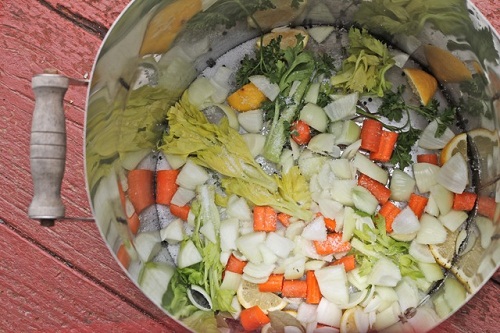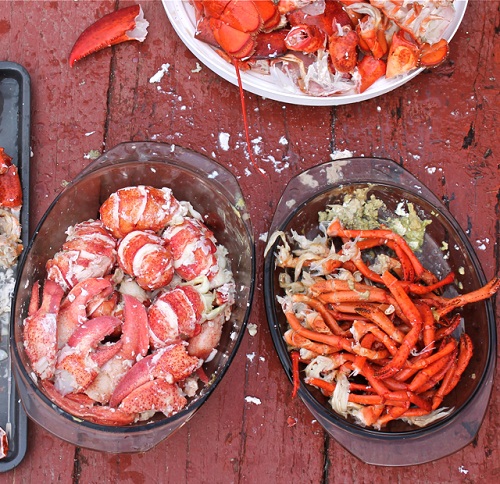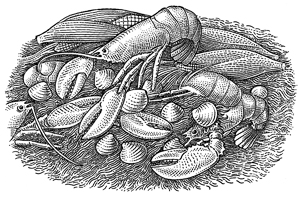 This started out as a four-part post, but lobsters just keep giving. So here's another classic - Lobster Bisque.
Bisque is the best way to savour every last scrap of your fruits de mer. A lobster's casing is full of flavour. You know what they say - waste not, want not. Next time you prepare crustaceans, remember to put a bisque on the menu too.
This started out as a four-part post, but lobsters just keep giving. So here's another classic - Lobster Bisque.
Bisque is the best way to savour every last scrap of your fruits de mer. A lobster's casing is full of flavour. You know what they say - waste not, want not. Next time you prepare crustaceans, remember to put a bisque on the menu too.
The only reason I'm calling this a poor man's version is because I don't put any of the meat back into the broth. It's all carcass and shells, veggies, a dash of cheap white wine, and home-smoked bacon.
Part 1 - Cooking the Lobster
Part 2 - Lobster Eggs Benedict
Part 3 - Flatbread Lobster Roll
Part 4 - Lobster Stuffed Shells

Serves 6-8
Ingredients
• shells and bodies of 4 lobsters, roughly chopped in pieces • 8 thick slices smoked bacon (optional) • 1 cup white wine • 2 medium onions, chopped • 2 medium carrots, chopped • 2 branches celery, chopped • 1 tablespoon tomato paste • 2 garlic cloves • 2 bay leaves • 2 sprigs of thyme • 1/2 cup butter • 1/2 cup flour

Directions
In a large pot, cook the bacon for 5 minutes. Add the onions, carrots, celery, and garlic and cook for another 5 minutes. Add the wine and simmer until reduced by half. Put the lobster shells in and just cover with water (or, for more flavour, cover with the liquid you used to cook the lobsters). Add bay leaves, thyme and tomato paste.
Simmer for 45 minutes.
Strain and discard the solids.
In the same pot, melt the butter and stir in the flour. Then add the liquid back to the pot a bit at a time. This will thicken the bisque. Season with salt and pepper.

Illustration by Kevin Sprouls.

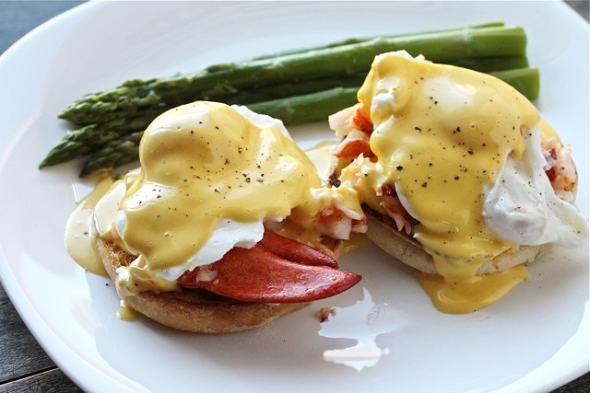 You've probably had eggs benedict with ham, smoked salmon, or spinach. Now try it with lobster. Let's add a side of asparagus, which also goes well with hollandaise sauce.Breakfast time!
For your lobster cooking need go to:
You've probably had eggs benedict with ham, smoked salmon, or spinach. Now try it with lobster. Let's add a side of asparagus, which also goes well with hollandaise sauce.Breakfast time!
For your lobster cooking need go to: 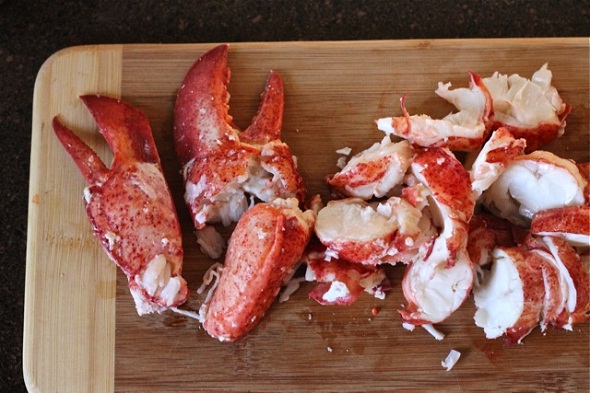
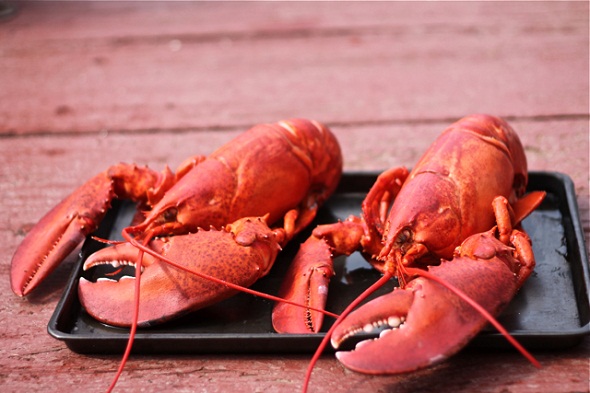 I'm making a five-part miniseries for HBO on lobsters - okay, not really, but that would be fun. We came up to New Brunswick for the week, and I've been spending quality cooking time with my dad. Outside on the deck, fixing up lobsters in the almost-spring sunshine. Making a small piece of the mountain smell like a summer bay and drinking beer. This kind of living is hard to beat.
The first part of this mini-series (bear with me) is about how to cook your lobsters. It's quite simple; all you need is salty water and lobsters. But to make them even more flavorful you can use a court-bouillon (water with aromatics and spices). A court-bouillon is like a stock but quicker to make. In mine I used onions, celery, carrots, lemon, garlic, thyme, bay leaves, salt, and black pepper. But if all you've got on hand are onions and bay leaves, it's all good. We want only to boost the lobster's natural flavor a bit.
I'm making a five-part miniseries for HBO on lobsters - okay, not really, but that would be fun. We came up to New Brunswick for the week, and I've been spending quality cooking time with my dad. Outside on the deck, fixing up lobsters in the almost-spring sunshine. Making a small piece of the mountain smell like a summer bay and drinking beer. This kind of living is hard to beat.
The first part of this mini-series (bear with me) is about how to cook your lobsters. It's quite simple; all you need is salty water and lobsters. But to make them even more flavorful you can use a court-bouillon (water with aromatics and spices). A court-bouillon is like a stock but quicker to make. In mine I used onions, celery, carrots, lemon, garlic, thyme, bay leaves, salt, and black pepper. But if all you've got on hand are onions and bay leaves, it's all good. We want only to boost the lobster's natural flavor a bit.